Top Tier CPU Air Coolers Q3 2015: 9-Way Roundup Review
by E. Fylladitakis on July 6, 2015 8:00 AM ESTThe Noctua NH-D15
Noctua is one of the world's most renowned cooler manufacturers. The company is especially well known for their high end and specialty products, aimed to those seeking extreme performance and or very low noise solutions. The cooler that the company provided us for this review is no other than the NH-D15, a behemoth based on the highly popular NH-D14.
The NH-D15 is supplied in a large cardboard box with a minimalistic, elegant design. Highlighting the main features of the cooler is the primary focus of the entire artwork. Inside the main box, we found the bundle packed into separate cardboard boxes and the cooler protected within a polyethylene foam construct. The bundle consists of the hardware necessary for the mounting of the cooler, an L type Philips PH2 screwdriver, a fan power cable splitter, two fan speed reducers, a tube of NT-H1 thermal grease, a metallic case badge, four rubber fan mounts and four wire clips for the two cooling fans.
Many people erroneously think that the NH-D15 is just a little larger version of the very popular NH-D14. The NH-D15 is a reverse-symmetric dual tower design based on the NH-D14, but there are numerous improvements. Noctua technically merged the core design of the NH-D14 with the fin design of the NH-U14S, which has the first seven fins of each tower shortened. This way, the NH-D15 can offer much wider compatibility with RAM modules if only the center fan is installed.
The rest of the fins are symmetric, meaning that both their sides are identical, which is mostly straight with a single small triangular notch at the center and a few more similar notches near the sides. In order to install/remove the NH-D15, the center fan needs to be removed. Another interesting point is that the fans can be moved upwards, several centimeters if needed be. Moving the front fan upward can allow the installation of tall RAM modules for a small impact on performance but it also requires a very wide case to do so.
Noctua provides two of their own NF-A15 140 mm fans alongside the NH-D15. Their brown/beige color is Noctua's trademark and unique to Noctua's products (or copies of them). These are very high quality fans, with SSO2 bearings (advanced liquid lubricated metallic bearings with magnetic stabilizers), rubber anti-vibration pads and ridged blades for airflow manipulation. For those that do not want to install the second fan on the cooler, because either they need to retain compatibility with certain RAM modules or they are simply satisfied with the performance of a single fan, Noctua provides rubber mounts for the installation of one NF-A15 as a case fan.
The base of the NH-D15 is relatively small in comparison to that of other coolers, yet obviously large enough to cover the entire surface of current CPUs. Most of the base is made out of copper, with steel parts used for retention, all nickel plated, along with the copper heatpipes as well. There are "only" six 6 mm heatpipes, the same number and size as with the older NH-D14, as Noctua clearly does not believe that enlarging the base and adding more heatpipes would make a notable performance difference. The contact surface is smooth and fairly well polished but not machined down to a perfect mirror finish.


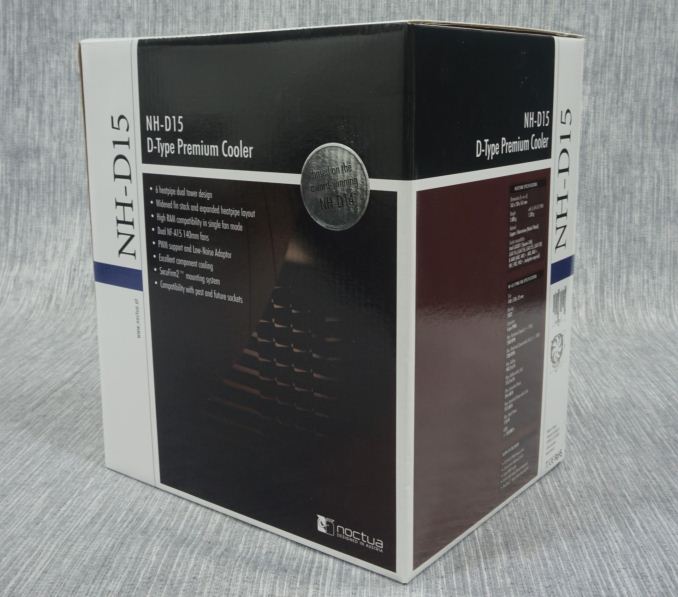
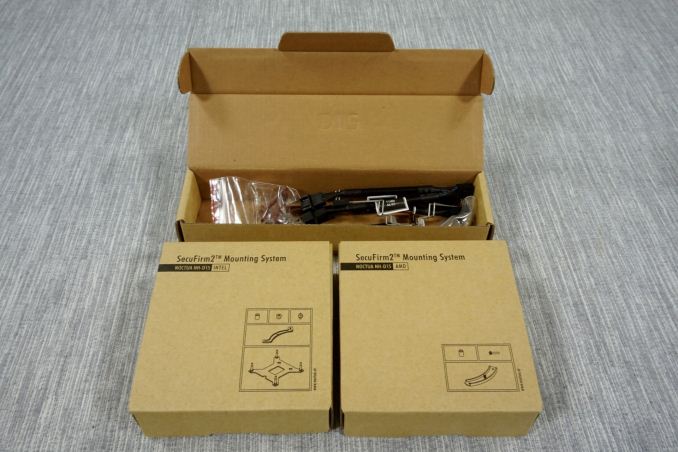
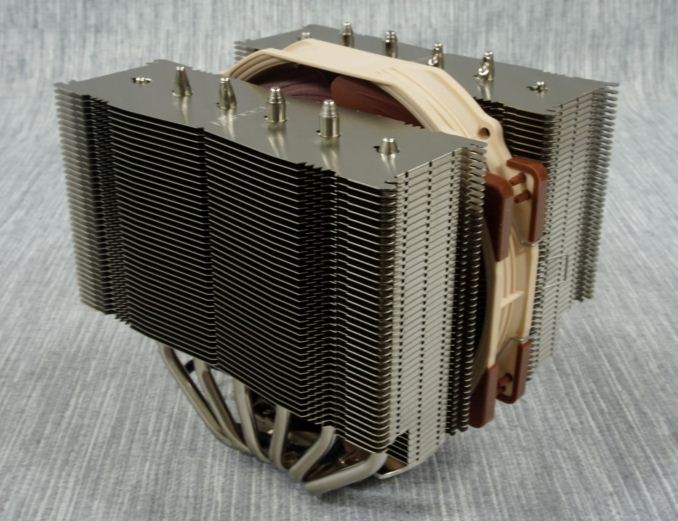
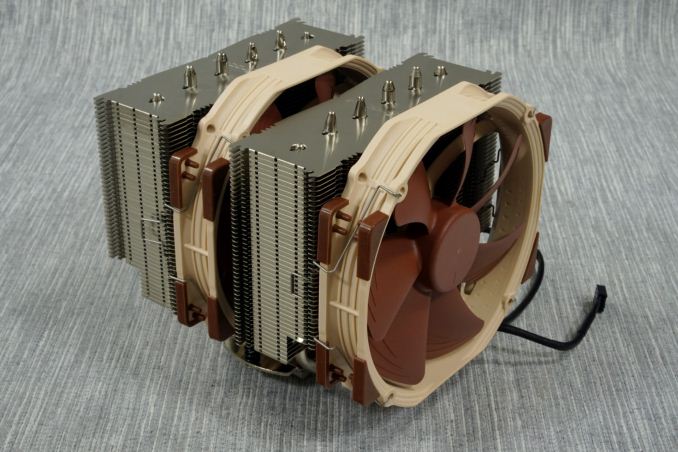
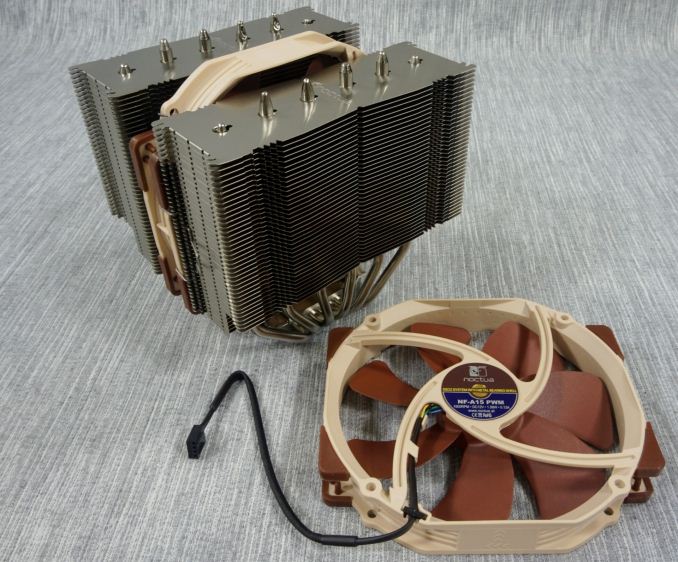
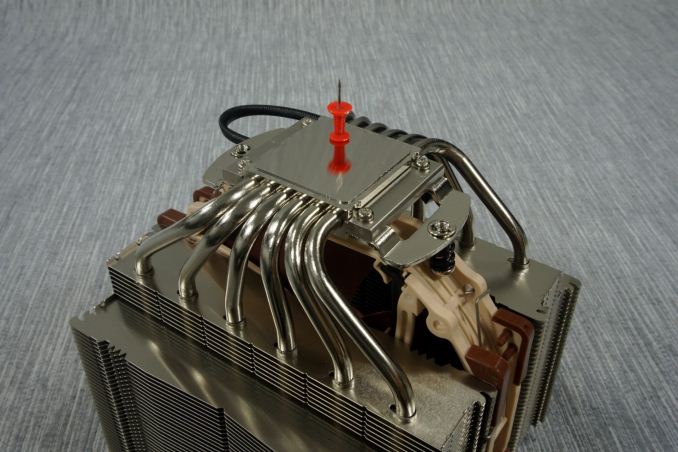








135 Comments
View All Comments
Drumsticks - Monday, July 6, 2015 - link
They did one of these round ups with the 212 Evo or + a while back, also involving high ends from Noctua (U14 and U12S I believe). They found that it doesn't quite match up, but I know it got a mention for exceptional performance for cheap. I think it falls behind more in noise than performance.It definitely would have been interesting to see it in here, but nevertheless, thanks for the review!
kmmatney - Monday, July 6, 2015 - link
I usually undervolt the fan a little - takes care iof any noise issues.Arnulf - Monday, July 6, 2015 - link
+1Nagorak - Monday, July 6, 2015 - link
I would have also liked to have a "decent" CPU cooler like that included, as well as the stock Intel/AMD HSF. It's great seeing how these coolers stack up to one another, but it doesn't truly quantify how much of an improvement you're getting over a cheap alternative, or the stock fan. For the record, I haven't run with a stock fan on any main PC I've owned in the past 15 years, but I would be curious to see how much I'm actually gaining.Araemo - Monday, July 6, 2015 - link
Especially given the raw value of the Hyper 212 Evo at $30, it may get within a degree or two of some of these for half the price or less... which is why my last build had the Hyper 212+ (It's been a few years) - I could have gained maybe 5C by spending 4 times as much.. which didn't seem worth it to me.TheJian - Tuesday, July 7, 2015 - link
AGREED. I have one, and at $29.95 from newegg just a few months ago on sale it was an AWESOME deal. i4790k can do massive oc's with it and even at full load is not terribly annoying with my 5850 causing most noise when gaming. This is still a top seller and for good reason.LittleLeo - Thursday, July 9, 2015 - link
Since its about the most popular cooler for gamers that would have been nice.jay401 - Monday, July 6, 2015 - link
I'm actually really glad to see this article, it's been ages since I've seen a good CPU air cooler roundup and sockets have changed several times over the years so it's nice to know what works well these days.jmke - Monday, July 6, 2015 - link
air cooling has plenty much run into a wall; heatpipes to copper base, aluminum fins on the heatpipes, put 140mm or 120mm fan... there is not a lot of wiggle room, so performance of those that follow this recipe is very close.differentiators now for most part are: socket compatibility, price, installation method. Raw performance/noise is no longer the focus imho if you want a successful product
meacupla - Monday, July 6, 2015 - link
It's not so much socket compatibility, so much as how compatible you can make your heatsink against mobos that have poor design choices.Although not as common on mATX and larger boards, mITX suffers a lot from this, because manufacturers attach fragile bits onto the back of the mobo, near the CPU socket, that interfere with the mounting bracket. Either that, or the CPU socket is placed too close to the PCIe, etc.
That Reeven Okeanos is something I haven't seen since Athlon 64 days, which are heatsinks paired with a stupidly loud fan. Look, if I wanted a heatsink with stupidly loud fan, I would buy an amazing heatsink or watercooler first, then attach the stupidly loud fan to that, instead of some mediocre heatsink with a mediocre fan.